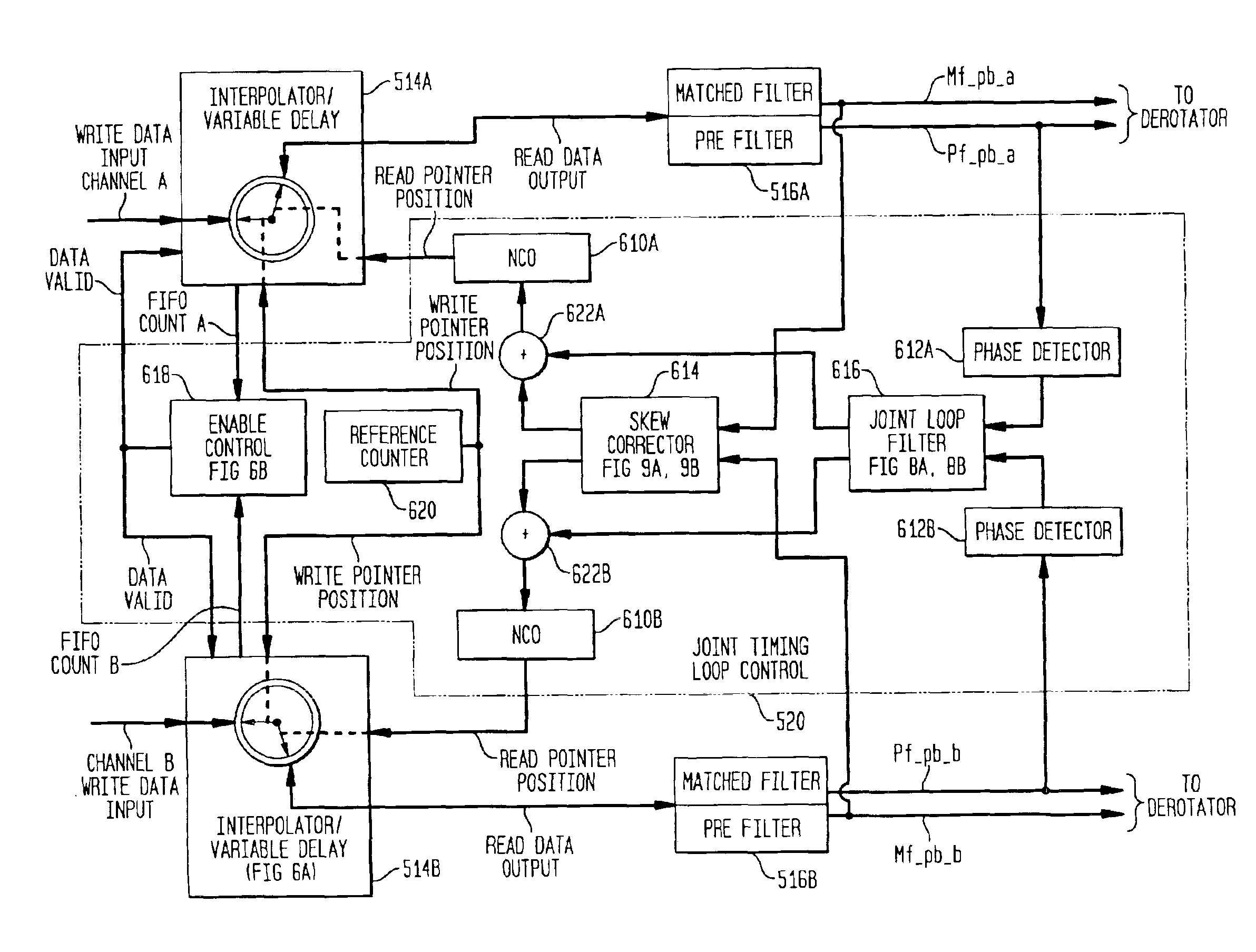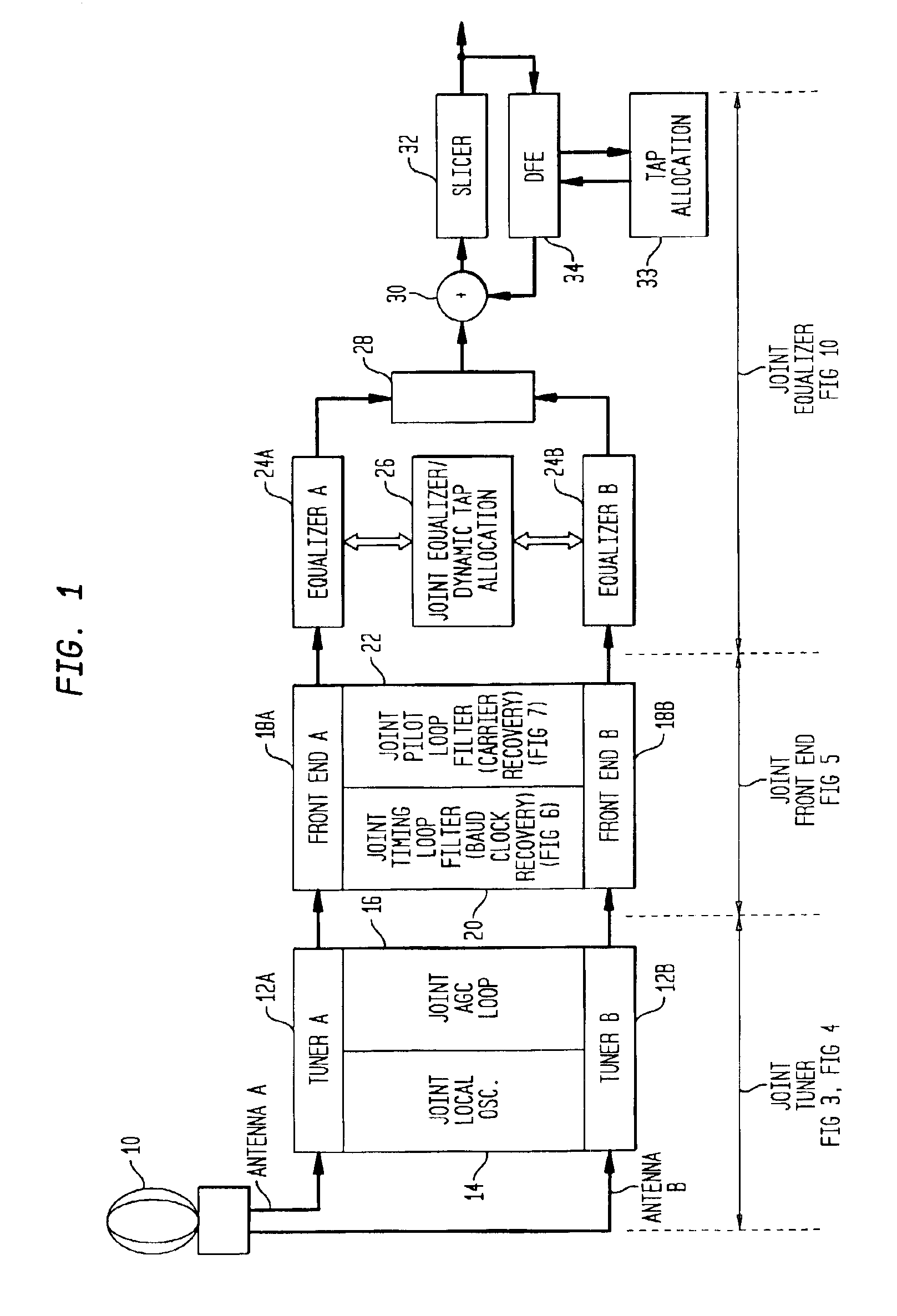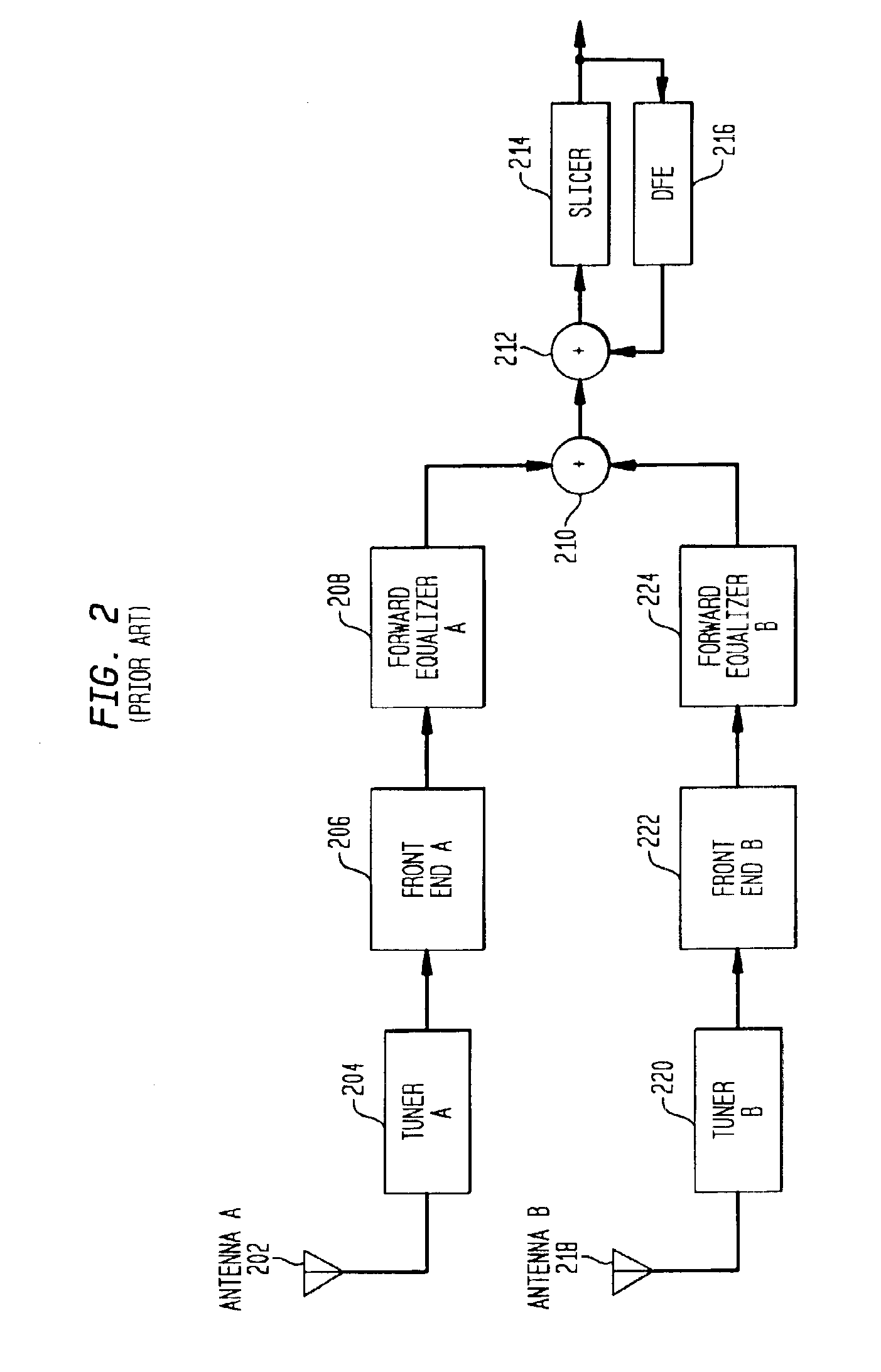Diversity receiver with joint baud clock recovery
a receiver and baud clock technology, applied in the field of diversity receivers, can solve the problems of bit errors, digital broadcast systems that can fail completely, and analog television signals degrade gracefully, so as to improve the overall bit error rate and increase the noise problem
- Summary
- Abstract
- Description
- Claims
- Application Information
AI Technical Summary
Benefits of technology
Problems solved by technology
Method used
Image
Examples
Embodiment Construction
[0047]FIG. 6B is a block diagram of the enable control logic 618 in the joint timing loop for baud clock recovery of FIG. 6 for use in conjunction with the present invention.
[0048]FIG. 7 is a block diagram of a joint pilot loop for RF carrier recovery for use in a multiple channel diversity receiver in accordance with the present invention.
[0049]FIG. 8A is a block diagram of a generalized joint loop filter in accordance with the present invention for use in the joint timing loop of FIG. 6 and joint pilot loop of FIG. 7.
[0050]FIG. 8B is a block diagram of a specific joint loop filter in accordance with the present invention for use in the joint timing loop of FIG. 6 and joint pilot loop of FIG. 7.
[0051]FIG. 9A is a block diagram partially in flow chart form of the skew corrector logic 614 in FIG. 6 in accordance with the present invention.
[0052]FIG. 9B is a flow chart diagram of the control logic 926 in FIG. 9A embodying the present invention.
[0053]FIG. 9C is an illustration of time ...
PUM
 Login to View More
Login to View More Abstract
Description
Claims
Application Information
 Login to View More
Login to View More - R&D
- Intellectual Property
- Life Sciences
- Materials
- Tech Scout
- Unparalleled Data Quality
- Higher Quality Content
- 60% Fewer Hallucinations
Browse by: Latest US Patents, China's latest patents, Technical Efficacy Thesaurus, Application Domain, Technology Topic, Popular Technical Reports.
© 2025 PatSnap. All rights reserved.Legal|Privacy policy|Modern Slavery Act Transparency Statement|Sitemap|About US| Contact US: help@patsnap.com



